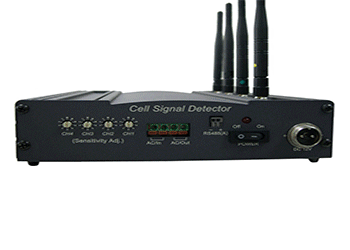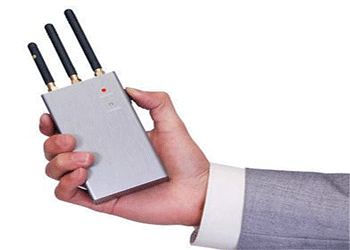GSM Signal Detector Miami Beach Coral Gables

GSM Signal Detector Miami Beach Coral Gables
Mobile phones have become ubiquitous and basic communications tools now used not only for phone calls, but also for accessing the Internet, sending text messages, and documenting the world.
Unfortunately, mobile GSM phones were not designed for privacy and security. Not only do they do a poor job of protecting your communications, they also expose you to new kinds of surveillance risks by the signal they emit, especially location tracking. Most mobile phones give the user much less control than a personal desktop or laptop computer would; it’s harder to replace the operating system, harder to investigate malware attacks, harder to remove or replace undesirable bundled software, and harder to prevent parties like the mobile operator from monitoring how you use the device. What’s more, the device maker may declare your device obsolete and stop providing you with software updates, including security fixes; if this happens, you may not have anywhere else to turn for these fixes.
Some of these problems can be addressed by using third-party privacy software, but some of them can’t.
Cellular phone technology is rapidly changing. Features like Bluetooth, USB, high-resolution cameras, microphones, Internet, 802.11 wireless, and memory cards are added every year. Also, the communication technology a cellular phone uses such as CDMA, GSM, 3G, and 4G and quality of signals are rapidly changing.
Currently, the three main technologies used by cellular phone providers are 2G, 3G, and 4G. Each generation of technology uses a different signal protocol. The signal protocols dictate how a cellular phone communicates with the tower. Some examples are frequency division multiple access (FDMA), time division multiple access (TDMA), code division multiple access (CDMA), global system for mobile communications (GSM), CDMA2000, wideband code division multiple access (WCDMA), and time-division synchronous code-division multiple access (TD-SCDMA).
All of these protocols typically operate in the 824 – 894 MHz band in the United States.
Some protocols, such as GSM (depending on the provider) will use the 1800 – 2000 MHz band.
Global System for Mobile Communications or GSM as it is well known is a standard used in mobile communications worldwide. Even if the first applications were developed for mobile phones, many other devices can communicate using this method.

GSM Signal Detector Miami Beach Coral Gables
Many businesses such as psychiatric hospitals, correctional facilities, pharmaceutical companies, government facilities, and military bases rely on keeping information protected. They build security fortresses that shield their money making information from getting to the general public. These facilities have many computers that house the valuable information and are not connected to the Internet. Generally, access is restricted by guards with metal detectors and electronic devices are not allowed in or out without proper approval.
In every secure facility, it is hard to ensure that employees and visitors aren’t violating the policies. The only way to ensure someone isn’t carrying a cellular phone is to search everyone as they enter and exit. This requires a great deal of manpower and most companies can’t afford that level of security. Additionally, it will make the employees feel like the company doesn’t trust them.
To get a good grasp on what is available today let’s take a close look at some of the shelf cellular signal detectors. Most detectors are manufactured with the intent that the cellular phone is stationary and powered on. They generally have the same features and it is questionable whether or not they actually detect a signal of a cellular phone.
Most GSM signal detectors work by measuring the cell phone’s electromagnetic properties and determining an identifiable signature.
GSM signal tracking is the ascertaining of the position or location of a mobile phone signal using GSM technology, whether stationary or moving. Localization may occur either via multilateration of radio signals between (several) cell towers of the network and the phone, or simply via GPS. To locate a mobile phone using multilateration of radio signals, it must emit at least the roaming signal to contact the next nearby antenna tower, but the process does not require an active call. The Global System for Mobile Communications (GSM) is based on the phone’s signal strength to nearby antenna masts.
Mobile positioning may include location-based services that disclose the actual coordinates of a mobile phone, which is a technology used by telecommunication companies to approximate the location of a mobile phone signal, and thereby also its user. GSM localization uses multilateration to determine the location of GSM mobile phones, or dedicated trackers, usually with the intent to locate the user.
In all modern mobile GSM networks, the operator can calculate where a particular subscriber’s phone is located whenever the phone is powered on and registered with the network. The ability to do these results from the way the mobile network is built and is commonly called signal triangulation.
One way the operator can do this is to observe the signal strength that different towers observe from a particular subscriber’s mobile GSM phone, and then calculate where that phone must be located in order to account for these observations. The accuracy with which the operator can figure out a subscriber’s location varies depending on many factors, including the technology the operator uses and how many cell towers they have in an area. Very often, it is accurate to about the level of a city block, but on some systems, it can be more accurate.
There is no way to hide from this kind of tracking as long as your mobile phone is powered on and transmitting signals to an operator’s GSM network. Although normally only the mobile operator itself can perform this kind of tracking, a government could force the operator to turn over location data about a user (in real-time or as a matter of historical record).
A bug or cell phone signal detector, pocket-size mobile transmission detector or sniffer can sense the presence of an activated GSM mobile cell phone from a distance of a one-and-a-half meter. So it can be used to prevent the use of mobile phones in examination halls, confidential rooms, etc. It is also useful for detecting the use of mobile phone for spying and unauthorized video transmission.
Most GSM signal detector circuit can detect both the incoming and outgoing calls, SMS and video transmission even if the mobile phone is kept in the silent mode. The moment the GSM bug detects RF transmission signal from an activated mobile GSM phone, it starts sounding a beep alarm and the LED blinks. The alarm continues until the signal transmission ceases.
Advantages of GSM Cell Phone Detector:
– Smaller in size
– Detection of hidden cell phones
Applications of GSM Cell Phone Detector
It is useful where the use of mobile phone is prohibited like
– Petrol pumps
– Gas station
– Historical places
– Religious places
– Court of laws
– Examination halls
– Spying and unauthorized video transmission
– Military bases
– Hospitals
– Theatres
– Conferences
– Embassies
How far away will a GSM signal detector detect phones?
There is no “finite and specific” distance that GSM phones will be detected. This is due to the variable power output discussed previously. There are 9 steps of power up/down that a GSM phone signal will send out when under control of the network so no one knows what power setting the phones are allowed to send at PLUS:
There are several FORMATS of GSM cell phone signals and in order of the most-to-least power being transmitted they are as follows:
- IDEN (aka Nextel) has the most power of any digital phone signal
- GSM (AT&T, T-Mobile, etc.) has the next highest power-per-bit quantity
- CDMA (Sprint, Verizon, etc.) also known as “spread spectrum” has a lower power per bit
- LTE/ HSPA and other 4th generation (4G) types of ultra-wide-bandwidth transmissions
This means that the detectors will alert on a GSM phone when it is farther away than for example a CDMA phone if both are “unmanaged” (at maximum power) or “managed” (variable power but probably lower than full) at the moment of transmission. That makes it difficult to measure exactly where the pickup zones are, how far away we can ‘hear’ it and alert the incident to you.
GSM signal detectors; what they do and don’t do:
GSM signal detectors are great for certain specific applications; and, like everything, they have capabilities we employ but need to understand them to get the most from their ability.

GSM signal detector Miami Beach Coral Gables.
The good parts of GSM signal detectors:
– Portable, easily carried from one area to another, no requirement to be fixed
– Bring the detector to the area of perceived problem immediately
– Lower cost of ownership (they cost a lot less than fixed detectors)
– Hunt down a ‘bug’ or surveillance device (camera, wireless mike, GPS tracker, etc.)
– Expect a handheld detector to pick these types up; they work and work well
The bad parts:
– Sometimes people order the handheld detectors to go and search for people carrying phones against the policy but are unhappy when they don’t detect phones. People see you coming with your detector in hand and don’t send texts or talk on their phone and if the phone isn’t registering then the detector won’t find them.
– Don’t expect a gsm signal detector to just find phones in people’s pockets for the above-stated reasons; use them to find bugs, cameras & trackers that transmit at regular, scheduled intervals.
– Handhelds cost less because they do less; (you get what you pay for)
– Less filtering inside to screen out 2-way radio signals (usually ‘permitted’ inside)
– Smaller antenna and only 1 vs. some with multiple antennas = shorter pickup range
– Fewer controls to ‘manage’ or fine-tune the unit to accommodate environmental changes
GSM signal detectors come in different form-factors and pickup/alert methods, in Spy World we have a vast variety of professional GSM signal detector, visit or contact us to get advice on what GSM signal detector meets your needs and take advantage of our offers in GSM signal detector devices. We are located in Miami Beach/Coral Gables, Florida.
[email protected] / [email protected]
Spy Store Miami & Spy Shop Miami
Miami Beach • Miami Gardens • Aventura • Coral Gables • Doral • Hialeah • Hialeah Gardens • Homestead • Kendall • Key Biscayne • Miami • Miami Lakes • North Miami • North Miami Beach • Opa-Locka • Palmetto Bay • Pinecrest • Pinecrest / Monroe Couty • South Miami • Miami Beach




